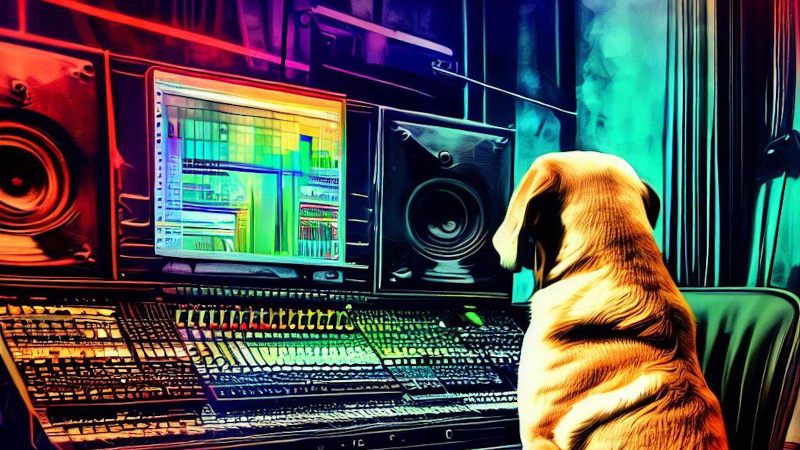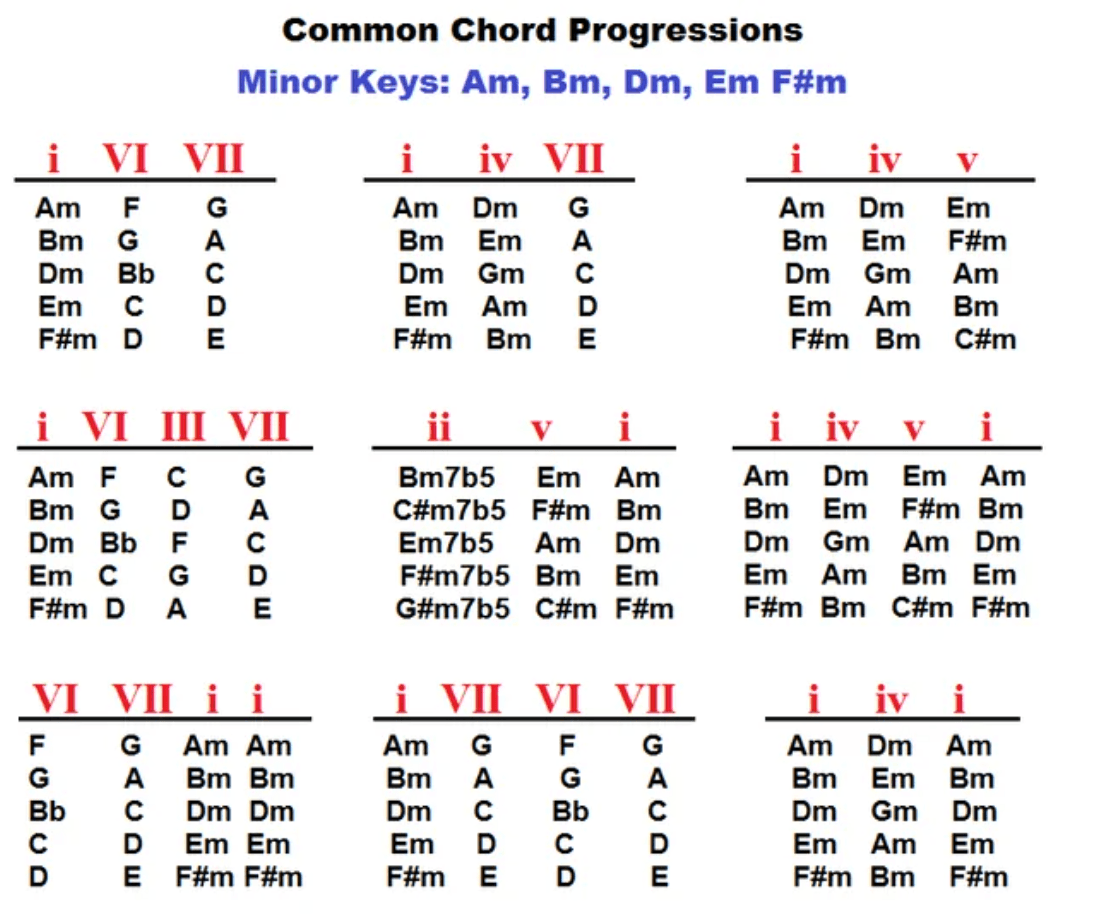Curious about how AI is shaking up the world of audio production?You've come to the right spot.
We're going to delve into the rich history of sound recording and spotlight some groundbreaking AI technologies that could redefine your creative path. Let's dive in!

A Brief Introduction to Audio Production: The Symphony of Tech and Talent
In the dynamic landscape of audio production, innovation and creativity have always played leading roles.
This compelling field, ripe with history and cutting-edge technologies, has been steadily evolving since its inception in the Industrial Revolution.
Let's take a brief yet informative journey through this exciting world.
The Dawn of Sound Capture: A Step Back in Time
The earliest audio production efforts were simplistic but groundbreaking.
Imagine a world where the possibility of recording and replaying sound was revolutionary.
Amidst the 1800s Industrial Revolution, visionaries like Thomas Edison concentrated on preserving sound in tangible forms.
This led to the creation of the phonograph, revolutionizing our perception of sound and setting the groundwork for the future of the recording industry.
Art Meets Technology: The Classic Meets the Modern
Zooming to today, we find an intricate blend of music, sound capture, and advanced audio engineering methods.
The landscape of music production now goes beyond just musicians and composers; it also incorporates engineers adept in the nuances of mixing, mastering, and editing.
Fueled by technological advancements in hardware, software, and digital interfaces, the accessibility and diversity of audio production have reached unprecedented levels.
AI's Grand Entrance: Elevating the Game
As we move further into the age of technology, AI music tools are making their mark in audio production.
While they aren't replacing the fundamental aspects of music production, these tools offer an impressive layer of assistance and inspiration. They're designed to enhance the creative process, making audio projects faster and often more experimental.
From songwriting to engineering, live performances to TV projects, AI like Empress is streamlining tasks that used to consume much more time.
Whether it's generating chord progressions or coming up with a catchy song title, AI is complementing human creativity, not replacing it.
Bridging the Gap: AI as an Extension of Human Creativity
The introduction of AI doesn't negate the blood, sweat, and tears that go into audio production.
Rather, it serves as a powerful assistant, helping musicians and non-musicians alike explore new principles, instruments, and vocals techniques in their audio production ventures.
Tools like Empress enrich the music business, offering features that can assist in everything from generating melodies to crafting Instagram captions for marketing.
Waves of Change: A History of Audio Production
The intricate tapestry of audio production has been woven over decades, moving through four groundbreaking eras: the Acoustic, Electrical, Magnetic, and Digital.
Each period has shaped the way we record, mix, and listen to sound, transforming a once rudimentary concept into a complex blend of art and technology.
The Acoustic Era (1877–1925): The Dawn of Sound Recording and its Limitations
At the heart of the Acoustic era was Thomas Edison’s groundbreaking phonograph.
This ingenious invention was the first practical device to capture and reproduce sound, laying the foundations for the modern world of audio production.
The Mechanics of Early Sound Recording
These early recording technologies operated purely on mechanical principles.
A large conical horn collected and focused sound waves from the human voice or musical instruments, directing them towards a diaphragm or membrane.
Connected to the diaphragm was a stylus that inscribed an analogue of the sound waves onto a moving medium like wax-coated cylinders or discs.
This mechanical marvel was both revolutionary and restrictive.
The Struggle with Fidelity and Volume
Despite the excitement these inventions generated, the quality of the recordings was far from ideal.
Sound fidelity was low, and the volume levels were limited.
The technology could only capture a narrow range of frequencies, approximately between 250 Hz and 2,500 Hz. This forced audio engineering to adapt to the limitations.
Adapting Musical Techniques to Acoustic Limits
Musicians and engineers adjusted their equipment and playing styles to these constraints.
Louder instruments like trumpets and trombones became favored, while lower-register brass instruments often replaced or doubled the double bass.
Wooden blocks even substituted bass drums.
Musical ensembles had to carefully orchestrate their positioning around the horn for balanced recording and play as loudly as possible to compensate for the low volume.
The Disc: A Lasting Legacy
By the end of the Acoustic era, the disc became the gold standard for sound recording.
Despite its limitations in frequency range and volume, it dominated the audio market well into the late 20th century.
This era was indeed the infancy stage of audio production, setting a primitive yet necessary foundation for the transformative eras that would follow.
The limitations of this period paved the way for innovation and drove the audio industry to new heights.
The Electrical Era (1925–1945): The Revolution of Amplified and Intricate Sound Recording
The Electrical Era was a significant milestone in the evolution of audio production, marking the transition from purely mechanical processes to the more complex and nuanced domain of electrical and electronic sound recording.
The introduction of Western Electric's integrated system in 1925 radically transformed the industry, setting the stage for the innovations that would follow.
Western Electric's Pioneering Systems
The birth of electrical recording can be attributed largely to Western Electric's integrated system, which included electrical microphones, electronic signal amplifiers, and electromechanical recorders.
This allowed for a hybrid audio production process, where sound could be captured, amplified, filtered, and balanced electronically.
However, the actual recording still remained essentially mechanical, as sounds were inscribed onto a wax 'master' disc.
Enhanced Fidelity and the Rise of the Audio Engineer
The audio engineering profession emerged due to the vast improvements in sound fidelity.
The frequency range expanded significantly to between 60 Hz and 6000 Hz, and professionals could now manipulate a fuller, richer sound through multi-channel electronic amplifiers, compressors, filters, and mixers.
This set the stage for more complex recordings, allowing a greater scope of expression and nuance.
The Birth of the "Crooner" and Wider Amplification Impact
Electrical microphones changed the game in performance styles, giving rise to the age of the "crooner."
Amplification technology also extended its reach beyond the recording studio, influencing broadcast radio, public address systems, and home record players.
Leveling the Playing Field: New Instruments Emerge
Electronically amplified musical instruments allowed quieter ones like guitars and string bass to hold their own against naturally louder wind and horn instruments.
This era also welcomed the invention of entirely new electronic musical instruments like the Theremin and the Hammond Novachord.
The Synchronization of Sound with Films
The race was on to integrate sound with films effectively. Landmark movies like "The Jazz Singer" initially used large soundtrack records synced mechanically with projectors.
However, the industry soon transitioned to sound-on-film technology, which laid the foundations for multi-tracking, a method of blending multiple separately-recorded audio sources.
The Enduring Legacy of the Loudspeaker
In the myriad of rapid advancements, one piece of technology has remained virtually unchanged since its introduction: the electro-acoustic transducer, or loudspeaker.
Its basic design, involving a conical diaphragm and a moving-coil electromagnetic driver, has survived multiple generations and still remains the most common means of converting electronic audio signals back into sound.

The Magnetic Era (1945–1975): The Age of Flexibility and High Fidelity in Audio Production
The Magnetic Era stands as a transformative epoch in the annals of audio production.
The period was ignited by the introduction of magnetic tape recording post-World War II, a technology that redefined the possibilities of sound recording and editing.
Offering unprecedented fidelity and editing flexibility, magnetic tape revolutionized the radio, music, and consumer audio industries, setting a new standard for the production and enjoyment of sound.
The Origin and Rise of Magnetic Tape
The technology of magnetic tape was initially confined to Germany, where it was developed in the 1930s and extensively used in broadcasting. Post-1945, with the end of World War II, the Allied nations got access to this groundbreaking technology, noticing its uncanny ability to produce audio quality almost indistinguishable from live broadcasts.
Within a short span of time, magnetic tape became the go-to medium for audio master recording, completely overshadowing discs.
Hi-Fi Stereo and Multi-Track Revolution
One of the significant leaps in this era was the development of hi-fi stereo recordings.
For the first time, consumers could experience unparalleled audio fidelity in the comfort of their homes.
Furthermore, the technology enabled multi-track tape recording, which radically changed the music industry by allowing for more complex compositions and intricate sound layering.
Editing: The New Frontier in Audio Production
Magnetic tape provided an astonishing level of control over the editing process, similar to how film revolutionized cinema.
Sounds could be manipulated, edited, and combined in ways that were simply not possible before.
Artists like Les Paul and Mary Ford utilized this newfound power to create 'virtual' ensembles, layering multiple recordings of voices and instruments.
Sophistication in Popular Music and Other Genres
This era marked a watershed moment in popular music, as magnetic tape permitted composers, producers, and engineers to create works of unprecedented complexity.
From symphonies to rock albums, the possibilities for crafting intricate sonic landscapes expanded enormously.
Consumer Audio Formats and Devices
Concurrent with these major shifts were several innovations in consumer audio formats.
Transitioning from shellac to polyvinyl plastic for discs, the introduction of the 33rpm, 12-inch long-playing (LP) disc and the 45rpm 7-inch "single" revolutionized the consumer market. In addition, portable tape recorders enabled high-fidelity recordings of live performances.
Not to be left behind were innovations like 4-track cartridges, compact cassette formats, and the world's first "sampling keyboards" like the Chamberlin and its successor, the Mellotron.
The Digital Era (1975–Present): The Quantum Leap in Audio Production and Consumption
The Digital Era signifies a monumental shift in the audio production landscape, redefining how we create, consume, and share audio content.
From the emergence of digital sound encoding to the rise of streaming services, this period has witnessed rapid advancements that have transcended previous technological limitations.
Most notably, it has paved the way for the next big thing—AI in audio production.
The Genesis of Digital Sound Encoding
The shift took off in the late 1970s as digital technology started to eclipse prior methods of audio recording. Pioneering companies such as Sony led the charge, unveiling the first consumer-friendly PCM encoder, the PCM-F1, in 1981.
Unlike analog formats, digital recording captured sound through a series of discrete samples, maintaining high-fidelity in playback.
Ry Cooder's album, 'Bop 'Til You Drop,' released in 1979, became the first all-digitally recorded popular music album, cementing digital audio's place in the industry.
The Compact Disc: A New Era of High-Fidelity Consumer Audio
Sony and Philips collaborated to introduce the Compact Disc (CD), a groundbreaking medium that quickly replaced vinyl records.
CDs offered several advantages—durability, portability, and the ability to reproduce the entire audible sound spectrum.
CDs also had a significantly higher storage capacity, capable of holding up to 80 minutes of audio, a considerable improvement over the LP format.
Digital Audio Files: The Disruption of Traditional Mediums
By the end of the 20th century, another innovation emerged to challenge CDs—the digital audio file (.wav, .mp3, etc.).
Thanks to signal compression algorithms, these files were far more manageable in size.
Companies like Apple capitalized on this, launching products like iTunes and the iPod, which became monumental successes.
However, this led to a surge in unlicensed distribution of audio files through various platforms.
The Rise of Online Streaming Services
As we moved into the 21st century, music streaming services like Spotify and Apple Music gained immense popularity.
These platforms utilized a 'freemium' business model and offered both radio-style and on-demand listening experiences.
Streaming services have significantly changed how consumers interact with music, rendering ownership less critical than ever before.
The Unforeseen Benefits and Challenges
Digital audio has significantly influenced both consumers and the music business.
It has enabled the efficient, cost-effective transfer of audio files and breathed new life into archived titles at minimal expense.
Nonetheless, challenges such as unauthorized distribution continue to pose serious issues for creators.
Digital Restoration and Consumer-Level Storage
Digital audio has revolutionized the restoration and remastering of older recordings.
Even freeware consumer-level software can now eliminate scratches and noise from vintage records, enhancing their overall sound quality.
Advances in storage technology have enabled consumers to amass vast libraries of digital media, something financially and physically impractical in the era of physical formats.
Future Perspectives: AI in Audio Production
As we look towards the future, Artificial Intelligence stands as the next frontier in audio production.
From automating mixing and mastering processes to predictive analytics in music composition, AI has the potential to take audio production and consumption to new heights.
The Digital Era has thus marked the end of one chapter and the beginning of another exciting phase in the history of audio production.
With limitless possibilities and advancements happening at breakneck speed, one can only imagine what the future holds.

Empress AI Music Tools: The Next Step in Audio Innovation
AI in audio production isn't just a buzzword; it’s a revolution that is poised to redefine the creative landscape.
Empress AI Music Tools is at the forefront of this transformation, providing a comprehensive suite of utilities for both seasoned musicians and novices alike.
Whether you're composing a melody, crafting lyrics, or designing rhythms, Empress has got you covered.
Melody Mind: Instant Melodies at Your Fingertips
Imagine having a personal assistant who can whip up a melody based on your selected parameters. With Melody Mind, you get exactly that.
Input your instrument, chosen chords, genre, and BPM, and Melody Mind will generate a melody that fits your criteria.
For instance, by inputting a guitar, A minor, blues, and a BPM of 80, you could receive a soulful melody that feels right at home in a smoky jazz club.
Lyric Lab: Crafting Lyrics in Any Style
Writing lyrics can be a daunting task, but Lyric Lab simplifies the process.
Specify your genre and tone, and let the AI work its magic. If you're aiming for a futuristic Sci-Fi track with an ominous tone, Lyric Lab can generate lyrics that resonate with your theme, potentially setting the stage for your next viral hit.
Chord Candy: The Backbone of Any Song
In any musical composition, the chord progression is often the backbone that holds everything together.
Chord CandyChord Candy lets you input the instrument, key, genre, and BPM to generate a selection of chords that can act as the foundation of your next chart-topper.
For example, with a piano in the key of F, pop genre, and a BPM of 120, you can get chords that are perfect for crafting a hit song.
Song Idea Generator: Tap into Human Emotion
Good songs often tap into raw human emotions. Song Idea Generator understands this fundamental aspect and allows you to explore various themes and emotions in your songwriting.
Whether you want to write about depression, euphoria, or anything in between, this tool can provide you with the inspiration you need.
Bass Brain & Drums De Dior: Rhythmic Excellence
When it comes to laying down the beats, Bass Brain and Drums De Dior offer unparalleled utility.
These tools add a new dimension to rhythm production and audio engineering, allowing you to input specifications to generate the perfect rhythm.
Whether you’re producing an EDM track or preparing for a live performance, these tools can greatly aid in achieving rhythmic excellence.
Harmonious Hitmaker: Titles That Resonate
Often, the success of a song can hinge on its title. Harmonious Hitmaker gives you that extra edge by generating song titles that resonate with your target audience.
Simply input the emotion and genre, and let the AI come up with titles that have the potential to be your next big hit.
Ready to Make Your Next Big Hit?
Are you ready to bring your musical visions to life? Empress AI music tools can assist in audio production, from the brainstorming stage to the final mastering. Try Empress today, and let's make beautiful music together.
FAQs: Audio Production
Q1: How do Empress AI tools fit into traditional audio production methods?
They complement existing techniques by speeding up the process and providing inspiration.
Q2: Can I use Empress AI tools for live performances?
Absolutely. The generated instruments and setlists can serve as a reference or even be integrated into live setups.
Q3: Are these tools useful for non-musicians?
Yes, they are designed to be user-friendly and can assist in various audio projects, including podcasts and TV production.
Q4: Do I need special plugins or equipment?
No, Empress is designed to be compatible with standard audio software.
Q5: How does AI affect the business aspect of the music industry?
It's an extra tool in your arsenal for mastering, editing, and even vocals, which can help reduce production costs and time.
Follow the future of music with Empress. Check out our blog to learn how you can effectively use these AI music tools.


